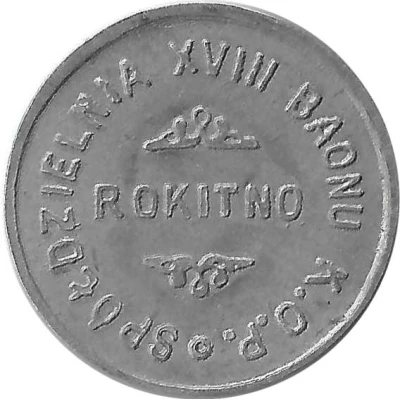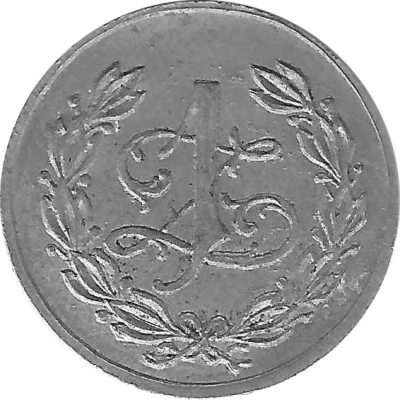


© l.gringo.n (CC BY-NC-SA)
1 Zloty - Spoldzielnia XVIII Baony K.O.P. Rokitno ND
| Aluminium | 2.28 g | 23.94 mm |
| Issuer | Polish notgeld (Poland) |
|---|---|
| Type | Token |
| Years | 1925-1939 |
| Value | 1 Zloty |
| Composition | Aluminium |
| Weight | 2.28 g |
| Diameter | 23.94 mm |
| Thickness | 2.02 mm |
| Shape | Round |
| Technique | Milled |
| Orientation | Medal alignment ↑↑ |
| Demonetized | Yes |
| Updated | 2024-10-07 |
| Numista | N#240285 |
|---|---|
| Rarity index | 95% |
Reverse
Script: Latin
Lettering:
1
Z
Edge
Plain
Comment
Credit token of the Polish Republic of the interwar period.After the end of the fighting with Soviet Russia, Polish units were stationed in places of permanent deployment and in most of them began to create cooperatives, in which, as shareholders were officers, non-commissioned officers, and in some units privates and even freelancers. to the Union of Military Cooperatives.
Military cooperatives needed not only to open their stores, which could provide shareholders with products and goods at fixed prices, but also to provide credit. In the absence of credit in the cooperative, its members would apply for purchases on credit to private sellers.
Credit in the cooperative was organized in the form of credit token, the amount of which was recorded in the book, and these token cooperative shop, workshop sold goods, products, services. Upon receipt of salary, each shareholder repaid his debt and he was again issued credit token (returned from shop in the board of the cooperative) with an entry in the book.
Thus, there was a repeated circulation of token, which rotated only within the cooperative of this military unit.
Credit token were paper and metal. Metal stamps were more profitable, as they were less worn out in circulation, so very few paper credit token have survived to this day (they were burned after cancellation) and a large number of metal ones.
The token, in addition to the face value, indicated the number and name of the military unit (not always) and occasionally the year of issue.
Some military cooperatives during the period of credit token (1925-39) changed them, ordering new sets of another type. The reasons could be different, including a significant loss, or the detection of a significant number of counterfeit stamps. Sometimes the replacement of paper token worn on metal. And finally, the replacement of token with the name or number of a military unit with token with the conditional name of the cooperative in order to preserve military secrecy, a few years before the German attack.
In addition to token with the inscription cooperative (SPOLDZIELNIA) and which were intended for purchases in the cooperative store, many divisions issued token for clubs (officers and non-commissioned officers), casinos, canteens, teahouses and other establishments.
The main place for the production of metal token for military cooperatives was the workshop of Bronislaw Grabski in Łódz. It produced the vast majority of metal issues. token and only the token of the front side had to be cut for each unit separately.
The most popular was a set of four denominations - 10,20,50 grosz and 1 zloty. Some ordered two- and five-zloty. token with a face value of 5 grosz, they were also minted, but they had only the inscription "military cooperative" and 5 grosz , so they could be used in any of the cooperatives.
Interesting fact
One interesting fact about this coin is that it was used as a form of local currency in the town of Rokitno during the period between World War I and World War II. The coin was issued by the local savings and loan association (Spoldzielnia) and features the image of a Polish eagle on one side and the value of 1 zloty on the other. The use of aluminum in the production of this coin was a common practice during this time period, as it was a relatively inexpensive and durable material. Despite its small denomination, this coin is now considered a rare and valuable collector's item, with some examples selling for hundreds of dollars.